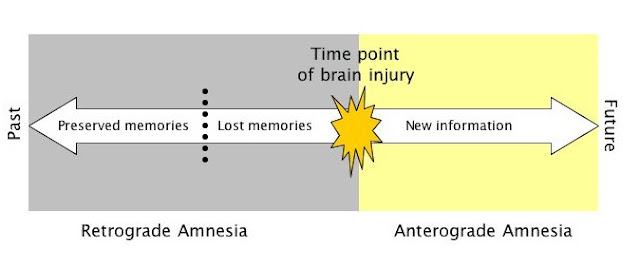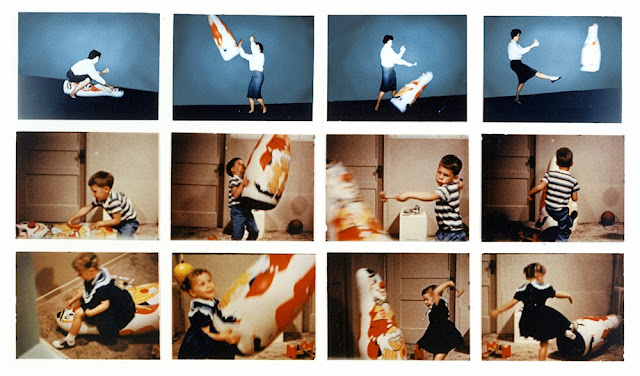Operant Conditioning
Try to recall the time that your mother
would reward you with toy that you will kill to have if you manage to get good
grades for you tests. What about a cane to the hand when you were caught lying
to her?
Without you realizing it, you are a great
example of operant conditioning!
Operant
conditioning - depends on consequences and involves reinforcements and
punishments.
This conditioning involves reinforcement
and punishment. Let’s get down to business.
Reinforcements
There are two types;
Positive reinforcements and negative reinforcements
Positive
reinforcement is giving something pleasant to increase a wanted behaviour or an
attitude. Thus, this increases the continuity of this behavior as a reward is
given.
For further clarification, examples!
A mouse will be given food when a
lever is pulled. (To develop pulling the lever as a behaviour)
The teacher or your parents will praise you for doing your homework
early.
Negative Reinforcement
Negative
reinforcement is taking away something unpleasant as a result of the behavior
that is acceptable. This time, is to remove something to increase a wanted
behavior.
For example…
Personally, I’ve been bullied before in school. That really made me not
even wanting to go to school. After reporting it and actions were taken, the
bully stopped. I started to like school back when there are no more threats,
name calling and physical abuse.
Shaping
Rome
isn’t built in a day, right?
Shaping is all about changing
behavior gradually, step by step.
For example, when training circus
animals, a trainer cannot immediately expect them to voluntarily risk it’s life
to become the first grilled lion by jumping throught a hoop of fire.
A lion jumping through a hoop should
first be trained to stay in a hoop.Then walk through a hoop, hop through a
hoop, and then, jump through a hoop while it is blazing with FIRE!!!
 |
“Care to listen to the schedule, Master Bruce?” |
Schedules
of Reinforcement
— Partial reinforcement effect - the tendency for a response that
is reinforced after some, but not all, correct responses to be very resistant
to extinction.
— Continuous reinforcement - the reinforcement of each and
every correct response.
Fixed
ratio schedules of reinforcement.
-The
amount you need to achieve to get a reward is fixed.
Variable
schedules of reinforcement
-The
amount you need to achieve to get a reward is not always the same.
Fixed
interval schedules of reinforcement.
-Work
for a set and constant amount of time, you would get a reward
We
usually see this in games. Like Candy Crush. There is a “life” system. If you
run out of lives, you cannot play. The game makes you wait for a specific
amount of time to get those lives back.
Variable
schedules of interval
-The
amount of time need to work for the reinforcement is changing to get the
reward.
An
example that I could give is waiting for a ride in the roller coaster. It could
be a straight jump to the roller coaster or even 15 minutes of waiting to get
on the ride.
Punishment
Punishments are events
or objects that make a response less likely to happen again.
There also two types of
punishment.
1. Punishment by Application
Punishment by
application is also known as positive punishment. It involves the presence of
an undesirable stimulus after a behavior. In simple words,
ADD UNPLEASANT STIMULI
to REDUCE BEHAVIOR
 |
| Caning is great example |
2. Punishment by Removal
Punishment by removal is
known as negative punishment. It involves the removal of a pleasurable stimulus
after a behavior. . In simple words,
REMOVE PLEASANT STIMULI
to REDUCE BEHAVIOR
 |
| "Darkness, we meet again..." |
How To Make Punishment More Effective
1. Punishment should
follow the behavior it is meant to punish. The interval between the undesired
behavior and the punishment should be small. This causes the person to
associate the behavior with the unpleasant behavior.
2. Punishment should be
consistent. If it’s not the person would not be scared and as guilty as the
person should.
3. Punishment of the
wrong behavior should be paired, whenever possible, with reinforcement of the
right behavior. “Do you know why did you have to stand on your chair? It’s
because you didn’t finish your homework! You should have done it earlier!”
Seems familiar? You see, vintage example of including the proper behavior after
the punishment.
 |
| Good old times... |
“Do you know why did you
have to stand on your chair? It’s because you didn’t finish your homework! You
should have done it earlier!” Seems familiar? You see, vintage example of
including the proper behavior after the punishment.
Cognitive Learning Theory
- CLT is a learning
that requires cognition which is thinking process.
- Cognition in other words
is the mental events that take place inside a person’s mind while
behaviour could no longer be ignored.
Learned Helplessness
Basically, it is involves giving up,
even when there is an opportunity to get out of a sticky situation after
failing repeatedly for action to be done.
This is because the subject has learned
even with any effort done; the subject thinks that failure is always the end
result.
 |
| How do you even ... :( |
On a personal example, I once tried
skate boarding. I have the basics to skate but up until today, I am unable to
perform an “Ollie” (a trick to jump with the board) because I have tried so
many times before. Yet, I have never landed one properly and would almost fall
for each attempt. Further attempts just make me feel that I would never be able
to do one.
Latent Learning
- is
a learning that remains hidden until its application become useful.
A lot that we learn in
class are latent learning which is in the form of theories. Later in life, we
would use some knowledge that we had already learned and apply it in our daily
lives.
 |
You might know how to repair the sink in theory but you
have never done it before! |
Insight also is one of the most popular behavior in psychology
- - It is the sudden perception
of relationships among various parts of problem, allowing the solution to the problem to come quickly
and it cannot be gained
through trial-and-error learning alone.
- This
is usually seen when we are trying to solve mathematical problems. We need
to understand the method need to be done because each problem is
different.
Observational Learning
When you are a kid, ever felt that you could
kick someone acrobatically like in those Chinese Kung Fu movies after your
watched them?
Well, that is generally a type of observational
learning.
Observational
learning is learning new behavior by watching a model perform that behavior.
A child
can be too aggressive after watching the video that shows people fighting with
each other and they can be either way when they are watching the video with
good values. This is because during the session, they are observing every
action that came out in the video. This is called observational learning.
They
observe what we do and then, they will try to do it. For example, when we are
smoking in front of them, there is no doubt they will try smoking too.
 |
| I miss Toby as Spidey |
Personally,
I still remember that as I got out from watching “Spiderman”, I tried to spray
webs and swing from one destination to another. I even the hand gesture in
hopes that webs would come out.
This can
be proven through the experiment that had been conducted by Albert Bandura,
Dorothea Ross, and Sheila Ross (1963). In this experiment, they asked two
groups of children to watch films in which an adult or a cartoon character
violently attacked an inflated ‘Bobo” doll. Another group watched a different
film. They then left the children in a room with a Bobo doll. Only the children
who had watched films with attacks on the doll attacked the doll themselves,
using many of the same movements they had just seen.
To shape
their actions and their minds, it shows that the children need a proper and
good example as a model to be replicated.








































































